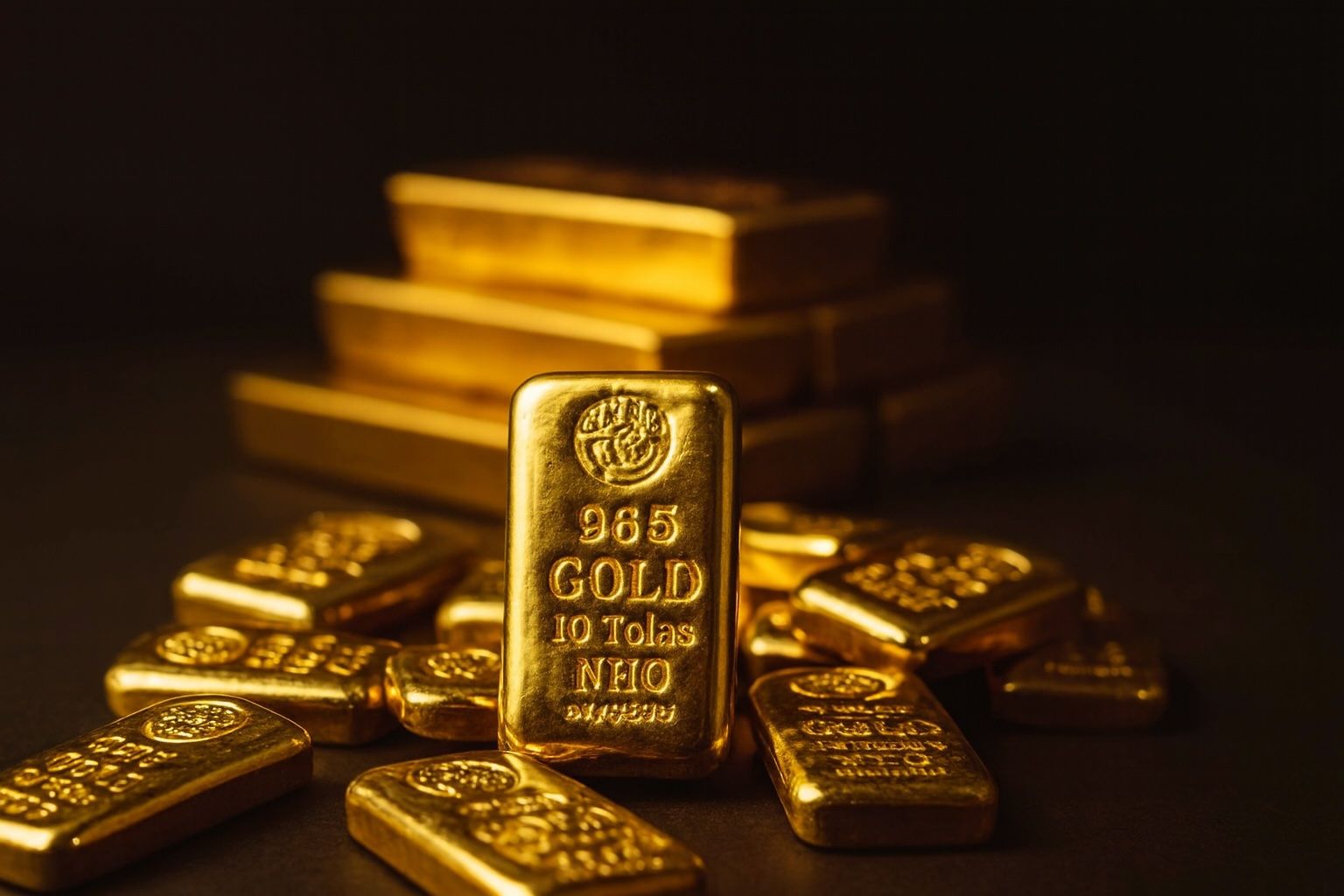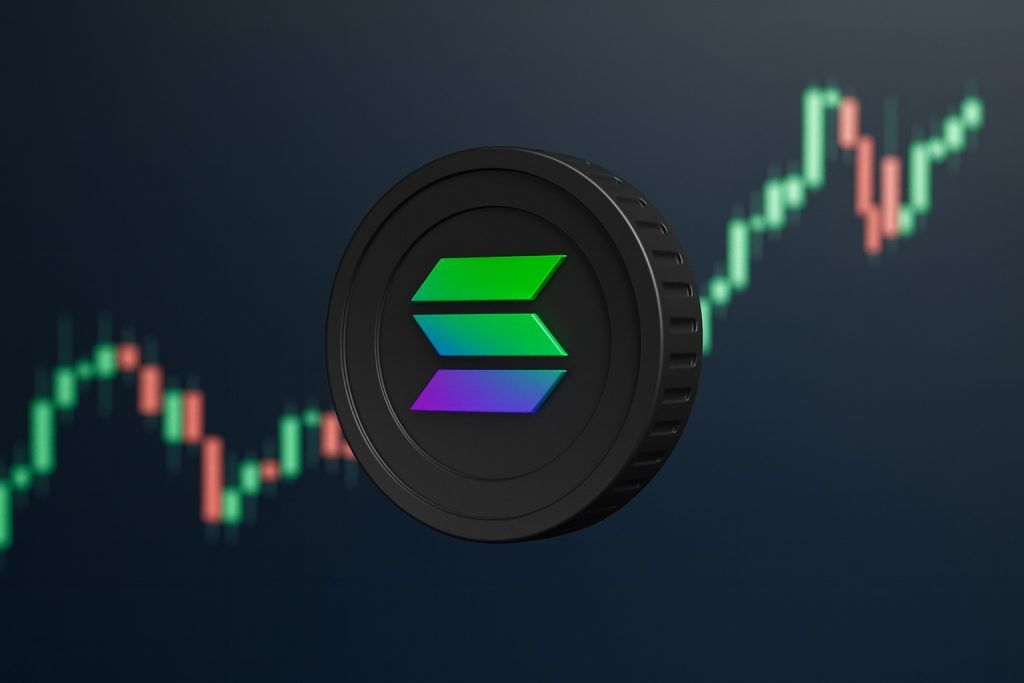- Record Run: Gold futures hovered around $4,270 per ounce on October 20, 2025, after briefly topping $4,300 to hit an all-time high late last week [1] [2]. The precious metal is coming off its strongest weekly jump since 2008 after safe-haven buying drove prices to a peak of $4,378.69 on Friday [3].
- 60% Year-to-Date Surge: Non-yielding bullion has gained over 60% in 2025, massively outperforming stocks [4]. Investors have flocked to gold amid a “perfect storm” of geopolitical tensions, aggressive interest rate cut bets, central bank gold buying, a weaker dollar (de-dollarisation), and robust demand via gold-backed funds [5].
- Fed Easing in Focus:Expectations of U.S. Federal Reserve rate cuts have been a key tailwind. Markets are fully pricing in a quarter-point Fed rate cut at the end of October (with another in December) [6], which has weakened bond yields and the dollar, boosting gold’s appeal as a safe haven. Upcoming U.S. inflation data (core CPI ~3.1% YoY) is unlikely to derail this dovish outlook [7], reinforcing the case for easier monetary policy that benefits gold.
- Bullish Forecasts:Wall Street is raising the bar for gold. HSBC bumped its 2025 average gold price forecast up to $3,455/oz (a $100 increase) and now projects gold could reach $5,000 in 2026 [8]. Other major banks echo the optimism: UBS analysts see prices testing $4,200 in coming months, and Goldman Sachs predicts nearly $4,900 by 2026 [9]. ANZ Bank similarly forecasts gold peaking near $4,600 by mid-2026 before moderating as interest rates eventually stabilize [10].
- Expert Sentiment: After a feverish run, gold’s rally is catching its breath. “The gold market is trying to find its footing after Friday’s selloff. Sentiment is normalising, cooling down a bit, after a few weeks of mania,” said Capital.com analyst Kyle Rodda [11]. Last week’s brief pullback (gold slid ~1.8% on Friday – its sharpest drop since May [12]) came after U.S. President Donald Trump eased trade war fears by calling a proposed 100% China tariff “unsustainable” [13]. That news boosted risk appetite and prompted some profit-taking in gold. Analysts view the pause as healthy, noting that a “vacuum” of U.S. economic data (due to a temporary government shutdown) and ongoing China trade talks have kept uncertainty high [14].
- Geopolitical Safety Trade:Global tensions continue to underpin gold. Investors are using the metal as a safety net amid worldwide volatility, from war conflicts to policy turmoil. The past weeks brought flashes of risk – from Middle East strife to U.S.–China trade drama – that sent traders into safe-haven assets. For example, escalating tariff rhetoric earlier in October helped propel gold’s surge, and although a ceasefire or tariff retreat can momentarily calm markets, broader “unease” persists [15] [16]. “Uncertainties…from a U.S. government shutdown and policy turbulence to ongoing geopolitical conflicts” have fueled a historic flight to safety into precious metals [17]. Gold’s rise this year reflects “growing unease about the economy and politics” rather than euphoria [18].
- Interest Rates & Inflation:Falling yields and inflation fears form the other side of gold’s rally. Even with inflation moderating in 2025, it remains above central bank targets, keeping the inflation hedge appeal of gold in play [19]. At the same time, the Fed’s pivot toward rate cuts – it already cut rates in September and is widely expected to again this month – has reduced the opportunity cost of holding gold. Lower interest rates and a softer dollar make non-interest-bearing gold more attractive [20]. As one strategist put it, gold thrives when real rates and the dollar fall, and that’s exactly what has happened as the Fed signals easier policy ahead [21] [22]. Indeed, traders cite the Fed’s looming easing cycle as a core driver behind gold’s 2025 boom, alongside worries about heavy government debt and deficits eroding currency value (the “monetary debasement” thesis) [23] [24].
- Central Banks & De-Dollarisation: A notable force behind gold’s strength is aggressive central bank buying. Nations from China and India to Poland and Turkey have been stockpiling gold reserves at a record pace, seeking to diversify away from the U.S. dollar [25]. 2025 is on track to be the fourth straight year central banks purchase ~1,000+ tonnes of gold [26] – a trend driven by efforts to hedge currency risk and geopolitical shifts. According to Deutsche Bank, gold now accounts for roughly 30% of global foreign exchange reserves, up from 24% a few months ago, as soaring prices and continued buying boost gold’s share of reserves (while the dollar’s share slips) [27]. This de-dollarisation dynamic has provided a steady undercurrent of demand, with central banks effectively backstopping the market. “Gold is reestablishing itself as one of the world’s most important reserve assets,” noted a Deutsche Bank analyst, pointing to the rapid rise in its role in central bank portfolios [28].
- ETF Inflows at Record High: Institutional and retail investors alike have piled into gold-backed exchange-traded funds (ETFs), amplifying the rally. Global gold ETFs have seen unprecedented inflows – about $67.7 billion so far in 2025, the largest annual haul on record, according to the World Gold Council [29]. The flagship SPDR Gold Shares (GLD) fund is up over 60% year-to-date in price terms, reflecting gold’s surge [30]. These massive inflows illustrate investors’ conviction in gold’s outlook. “Everyone wants gold,” quipped one ETF analyst as precious metal funds swelled with new money. Not only ETFs, but futures and options markets have also seen bullish positioning, and speculative interest in gold is at multi-year highs, further propelling prices.
- Mining Stocks Skyrocket: The gold bonanza has spilled over to gold mining equities, which often act as leveraged plays on the metal. Gold miners’ stocks have exploded higher in 2025, delivering even bigger percentage gains than bullion itself. The VanEck Gold Miners ETF (GDX), a basket of major gold mining companies, has more than doubled in value year-to-date [31]. Industry leaders are seeing windfalls: for example, Newmont Corporation, the world’s largest gold producer, has seen its share price soar roughly 140% in 2025, making it one of the top-performing stocks in the S&P 500 index [32]. Similarly, competitors like Barrick Gold and Agnico Eagle Mines have notched strong double-digit returns. Despite these “jaw-dropping gains,” some experts argue miners remain undervalued relative to gold’s price. BlackRock’s Evy Hambro — a prominent metals investor — noted that many mining firms are generating “enormous margins yet remain ridiculously cheap” because analysts are still modeling long-term gold prices far below current levels [33]. Many forecasts used by the market assume gold at $2,200–$2,400/oz, Hambro pointed out, so if gold stays near $4,000, miners could far exceed earnings expectations [34]. This valuation gap has led major investors like BlackRock to increase stakes in select gold miners, anticipating that share prices may “re-rate” higher if gold’s elevated levels persist [35] [36].
- Physical Demand Resilient (India’s Festival Rush):Consumer demand for physical gold has held up notably well despite record prices, especially in traditional gold-buying countries. In India, the world’s second-largest gold consumer, this year’s autumn festive season saw shoppers adapt rather than retreat. The Hindu festival of Dhanteras (Oct. 18, 2025) – an auspicious day for gold purchases – did see a drop in jewelry volume purchases (industry bodies estimate gold jewelry demand fell ~30% from last year due to the steep prices) [37]. However, Indian buyers pivoted to smaller forms of gold: coins and bars “flew off the shelves”, according to the India Bullion & Jewellers Association, as people sought to own the metal in more affordable units anticipating the rally will continue [38]. Overall Dhanteras gold sales by weight were only 10–15% lower than last year, and in value terms they hit record highs thanks to the price surge [39]. Local gold prices in India hit an all-time peak of around ₹132,300 per 10 grams (~$4,290/oz) during the festival, over 60% higher than a year ago [40]. Such was the demand that Indian dealers charged premiums up to $25/oz above global benchmark prices – the highest premiums in over a decade – as supply struggled to meet the holiday rush [41]. This robust physical appetite, even at lofty price levels, underscores gold’s enduring cultural and safe-haven draw. Similar trends have been seen in other Asian markets, where high prices have only slightly dampened retail buying as consumers adjust their preferences (shifting to lighter jewelry or coins) rather than exit the market entirely.
- Outlook: Cautious Optimism Ahead – $5,000 on the Horizon? The consensus among many analysts is that gold’s uptrend has room to run, though possibly at a more measured pace and with bumps along the way. Safe-haven catalysts – from uncertain global politics to a potential U.S. economic slowdown – remain in play going into late 2025, suggesting support for gold will persist. Rate cuts expected from the Fed and other central banks could further burnish gold’s appeal in the coming months, especially if real interest rates turn deeply negative. Several forecasters now see gold approaching the $4,500–$5,000 range over the next 1–2 years [42] [43]. However, veteran traders warn that no rally is eternal: if the geopolitical climate improves or the Fed’s easing cycle is cut short, gold could see a meaningful correction. Gold’s swift climb has priced in a lot of worst-case scenarios; any signs of cooling inflation, a stabilizing economy, or resolution of major conflicts might sap some of the metal’s safe-haven premium. Technical indicators also bear watching – for instance, gold’s relative strength index (RSI) recently flashed “overbought,” hinting at stretched conditions [44]. Still, for now the trend remains bullishly intact. “Don’t fight the tape” is a mantra in markets, and the tape for gold has been one of relentless gains. As long as uncertainties hang over the economy and investors seek insurance against the unknown, gold’s glitter is unlikely to fade. Many portfolio strategists advise maintaining an allocation to gold as a hedge, noting that it’s one asset that “does very well when the typical parts of the portfolio go down” (in the words of investor Ray Dalio) [45]. With both institutional giants and small investors in its corner, the gold boom of 2025 has become a standout story – and all eyes are on whether the legendary $5,000/oz milestone might be the next chapter in this historic rally.
Sources: Reuters [46] [47] [48] [49]; TS2.tech [50] [51]; ETF.com [52] [53]; Reuters (India) [54] [55]; MarketMinute [56] [57].
References
1. www.reuters.com, 2. www.reuters.com, 3. www.reuters.com, 4. www.reuters.com, 5. www.reuters.com, 6. www.reuters.com, 7. www.reuters.com, 8. www.reuters.com, 9. ts2.tech, 10. www.reuters.com, 11. www.reuters.com, 12. www.reuters.com, 13. www.reuters.com, 14. www.reuters.com, 15. ts2.tech, 16. ts2.tech, 17. ts2.tech, 18. ts2.tech, 19. ts2.tech, 20. ts2.tech, 21. ts2.tech, 22. ts2.tech, 23. ts2.tech, 24. ts2.tech, 25. www.etf.com, 26. ts2.tech, 27. www.etf.com, 28. www.etf.com, 29. www.etf.com, 30. www.etf.com, 31. markets.financialcontent.com, 32. markets.financialcontent.com, 33. markets.financialcontent.com, 34. markets.financialcontent.com, 35. markets.financialcontent.com, 36. markets.financialcontent.com, 37. www.reuters.com, 38. www.reuters.com, 39. www.reuters.com, 40. www.reuters.com, 41. www.reuters.com, 42. www.reuters.com, 43. ts2.tech, 44. ts2.tech, 45. ts2.tech, 46. www.reuters.com, 47. www.reuters.com, 48. www.reuters.com, 49. www.reuters.com, 50. ts2.tech, 51. ts2.tech, 52. www.etf.com, 53. www.etf.com, 54. www.reuters.com, 55. www.reuters.com, 56. markets.financialcontent.com, 57. markets.financialcontent.com









